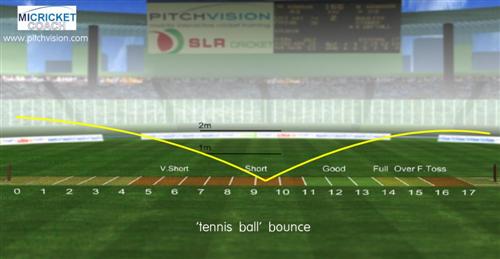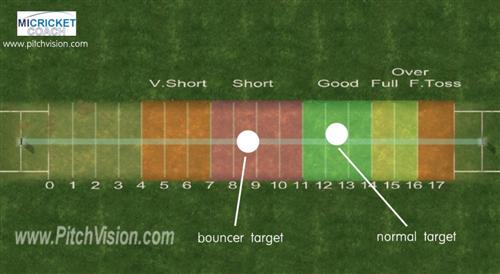|
When you think of the great West Indian pace bowlers of the past, you can't help but wince at their ability to bowl terrifying bouncers. How do you make a batsman jump like that?
Those West Indian legends knew a bouncer was far more than just banging it in halfway down and hoping for the best. Really good bouncers need to be as accurate as traditional line and length bowling to be effective. Otherwise it's a waste of all that effort.
Not all pace bowlers can bowl bouncers
The first question before you even try and use the bouncer as a weapon is: Can I bowl one? Not everyone can.
You need pace. Not 90mph (145kph) pace but you do need to be seen as quick by the batsman at the other end. You might not be fast enough to trouble Sachin, but at club or school level you don't need to be.
You also need a wicket with decent pace in it. This is rarely a problem on the hard wickets in South Africa or Australia. A wicket that is as soft as a English club ground in April is one to avoid the short ball.
Go for the throat
Assuming you have the pace and wicket, a perfect bouncer reaches the batsmen:
- Still rising
- At throat height
The area to aim for is something like this:
These two elements are important because it forces the batsman to take action. He or she may duck, weave, block or hook but something must be done or they will get hit. This increases the chances of a mistake and your chances of a wicket.
A common mistake with bouncers is to bang it in too short or with not enough pace. This makes theball bounce more like a tennis ball and is coming down as it reaches the batsman:

This is much easier to play for the batsman who can watch it go by harmlessly or punish it. The take home point: when you bowl it, bowl it quick.
You will probably need to experiment a little to find the perfect length on the pitch you are playing on, so stay calm if you get one or two off target to start with.
Change your focus: 'Into' not 'Through'
Normally when you bowl you are focused on getting the ball through quickly on a good length. Some bowlers look at the stumps, some at the point on the pitch where they are aiming and some at the wicketkeeper knowing if the ball gets through to him or her at pace and a good height then the length is right.
This changes for the bouncer.
Now you are aiming to transfer all the energy your action is making to drive the ball into the pitch as hard as possible. So you look at the pitch and drive towards the spot to bury the ball into the ground halfway down:

The main difference is that you are now bowling into the pitch hard, rather than through; As some coaches put it now: you are 'hitting the deck' rather than 'kissing the surface'.
This is done, according to Ian Pont's 'Fast Bowler's Bible' by aiming to drive your shoulder into the pitch as you follow through with a much lower exit stride. You can see the difference in these 2 pictures where Brett Lee is much lower following through: Bouncer, normal delivery.
Keep the bouncer as a surprise ball
Even when you have mastered the ball with lots of net and middle practice, avoid over-using the delivery.
A lot of young fast bowlers can get carried away when they see a fast pitch and realise they can rough up a batsman. Before long the batsman is sitting back waiting for the short ball and punishing anything that is not perfect. To bowl a spell based on the short ball requires a great deal of accuracy and pace, can you say 100% that you can do it?
If you can't, use the bouncer as a surprise ball. It's especially good against batsmen who play off the front foot and get stuck when the bouncer is thrown in.
If you come across a good hooker of the ball, adjust your line to around off stump when you bang it in. This makes it much harder to hit. It's even more important to keep it as a shock ball to this type of batter as if they expect it they can hurt you more than you can hurt them.
Whatever your plan with the bouncer, the key is to make sure you plan and practice it rather than just mindlessly banging it in. Controlled aggression is far more effective.
image credit: pgchamberlain
Bowling areas images supplied by PitchVision - Coach Edition. Available to purchase now for clubs, schools and cricket centres.
Discuss this article with other subscribers
|

.jpg)




.jpg)


